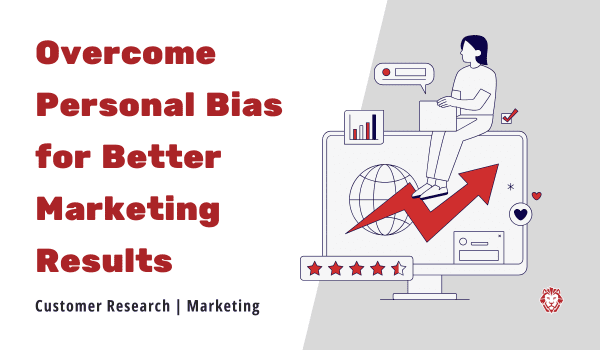
How to Assess Your Creative with Data
How to Assess Your Creative with Data
Learn how to effectively evaluate your marketing creative using data-driven insights
With the rise of technology and the abundance of information available, marketers have shifted their focus towards data-driven approaches. Data provides valuable insights into customer behavior, preferences, and trends, allowing marketers to make data-backed decisions and create highly targeted marketing campaigns.
Data-driven marketing has revolutionized the way businesses operate in the modern world. Gone are the days of relying solely on intuition and guesswork. Today, marketers have access to a wealth of data that can help them understand their customers on a deeper level. By analyzing this data, marketers can uncover hidden patterns and trends that can inform their marketing strategies.
The Role of Data in Modern Marketing
Data acts as the backbone of modern marketing, providing the necessary information to understand customer needs and expectations. By analyzing data, marketers can identify patterns, trends, and demographics, enabling them to create personalized and tailor-made marketing creative that resonates with their target audience.
For example, let’s say a company wants to launch a new product targeting millennials. By analyzing data on this demographic, marketers can gain insights into their preferences, interests, and purchasing behavior. Armed with this knowledge, they can create marketing campaigns that speak directly to millennials, using language, visuals, and messaging that resonate with this specific audience.
Data also plays a crucial role in understanding customer journeys. By tracking customer interactions across various touchpoints, marketers can gain a holistic view of the customer journey and identify areas where improvements can be made. This data-driven approach allows marketers to optimize the customer experience, ensuring that each interaction is seamless and personalized.
Why Data is Crucial for Your Marketing Creative
Data-driven marketing creative helps businesses make informed decisions, minimize risks, and maximize return on investment (ROI). By leveraging data, marketers can identify the most effective channels, messaging, and visuals that drive engagement and conversions. Data allows businesses to understand the impact of their marketing efforts and make necessary adjustments to optimize their creative strategies.
For instance, imagine a company running an email marketing campaign. By analyzing data on open rates, click-through rates, and conversions, marketers can determine which subject lines, content, and call-to-actions are most effective. Armed with this knowledge, they can refine their email marketing strategy, ensuring that each email they send is tailored to the preferences and needs of their audience.
Data-driven marketing creative also helps businesses stay ahead of the competition. By continuously analyzing data and monitoring market trends, marketers can identify emerging opportunities and adapt their strategies accordingly. This proactive approach allows businesses to stay relevant and maintain a competitive edge in today’s fast-paced digital landscape.
Data is not just a buzzword in marketing; it is a powerful tool that can drive success and growth. By leveraging data, marketers can gain valuable insights into their target audience, optimize their marketing creative, and stay ahead of the competition. Embracing a data-driven approach is no longer an option but a necessity for businesses looking to thrive in the digital age.
Steps to Assess Your Marketing Creative with Data
Assessing marketing creative with data involves several key steps that ensure accurate analysis and actionable insights.
When it comes to assessing your marketing creative with data, there are a few additional steps you can take to enhance your analysis and gain even more valuable insights. Let’s dive deeper into these steps:
Identifying Key Metrics for Assessment
The first step is to determine the relevant metrics that align with your marketing objectives. These metrics could include click-through rates, conversion rates, bounce rates, social media engagement, or website traffic. By focusing on specific metrics, you can measure the success of your marketing creative accurately.
However, it’s important to note that different marketing channels may require different metrics for assessment. For example, if you’re running a social media campaign, you may want to pay more attention to engagement metrics like likes, comments, and shares. On the other hand, if you’re focusing on email marketing, open rates and click-through rates may be more relevant.
By tailoring your metrics to each specific marketing channel, you can gain a more comprehensive understanding of how your creative is performing across different platforms.
Implementing Data Collection Methods
Once you have identified the metrics, it’s important to establish effective data collection methods. This can be achieved through various tools and technologies, such as Google Analytics, social media monitoring tools, and customer feedback surveys.
The data collected should be reliable, accurate, and consistent to provide meaningful insights.
In addition to these commonly used data collection methods, there are other innovative approaches you can consider. For instance, implementing heatmaps on your website can help you visualize user behavior and identify areas of improvement. A/B testing is another powerful technique that allows you to compare different versions of your marketing creative and determine which one performs better.
By utilizing a combination of traditional and cutting-edge data collection methods, you can gather a wealth of information that will enable you to make data-driven decisions and optimize your marketing creative effectively.
Analyzing and Interpreting Collected Data
Once the data is collected, it’s time to analyze and interpret the findings. This involves identifying trends, patterns, and correlations within the data to gain a deeper understanding of customer behavior and preferences. Analyzing data allows marketers to identify strengths, weaknesses, opportunities, and threats, enabling them to optimize their marketing creative effectively.
However, it’s essential to approach data analysis with a critical mindset. Don’t just focus on surface-level insights; dig deeper and look for hidden patterns that can provide valuable insights. For example, if you notice a significant drop in website traffic, instead of simply concluding that your marketing creative is not performing well, investigate further to understand the underlying reasons.
Furthermore, consider segmenting your data to gain a more granular understanding of different audience groups. By analyzing data based on demographics, geographic location, or purchasing behavior, you can tailor your marketing creative to specific segments and maximize its impact.
Remember, data analysis is an ongoing process. Continuously monitor and analyze your marketing creative’s performance to identify areas of improvement and stay ahead of the competition.
Enhancing Your Marketing Creative with Data Insights
Data insights provide valuable information that can be leveraged to enhance marketing creative and drive better results. In today’s digital age, where data is abundant and easily accessible, marketers have the opportunity to tap into this wealth of information to gain a deeper understanding of their target audience and create more impactful campaigns.
Applying Data Insights to Improve Creatives
By integrating data insights into creative strategies, marketers can tailor their messaging, visuals, and offers to align with the preferences and needs of their target audience. Gone are the days of one-size-fits-all marketing. With data insights, marketers can segment their audience based on demographics, behaviors, and interests, allowing them to deliver personalized and relevant content.
For example, if data analysis reveals that a significant portion of the target audience prefers video content over written articles, marketers can focus on creating engaging video ads that capture their attention. By understanding the preferred channels, times, and formats, marketers can optimize their creative efforts to increase engagement and conversions.
Moreover, data insights can also help identify gaps or areas of improvement in existing marketing campaigns. By analyzing the performance metrics, marketers can pinpoint which aspects of their creative strategies are underperforming and make data-driven adjustments to optimize their campaigns.
Predictive Analysis for Future Marketing Strategies
Data-driven marketing allows businesses to predict future trends and behaviors based on historical data. Predictive analysis, a powerful tool in the marketer’s arsenal, helps marketers anticipate customer needs and preferences, allowing them to stay ahead of the competition and create marketing creative that resonates with their audience.
By analyzing past campaign data, marketers can identify patterns and trends that can be used to make informed decisions for future marketing strategies. For instance, if data analysis reveals that a particular offer or promotion resulted in a significant increase in conversions, marketers can replicate that success in future campaigns.
Furthermore, predictive analysis can also help marketers identify potential customer churn. By analyzing customer behavior and engagement metrics, marketers can proactively address issues and implement strategies to retain customers before they disengage.
Overall, leveraging data insights for marketing creative allows businesses to make data-driven decisions, optimize campaigns, and create more personalized and impactful content. In a competitive landscape where standing out is crucial, data insights provide marketers with a competitive edge, enabling them to connect with their audience on a deeper level and drive better results.
Overcoming Challenges in Data-Driven Marketing Assessment
While data-driven marketing assessment provides valuable insights, there are challenges that marketers need to address to ensure accurate and reliable data.
Addressing Common Obstacles in Data Collection
Data collection can face challenges related to privacy concerns, data quality, and accessibility. Marketers need to ensure that data collection methods comply with privacy regulations and that the data collected is accurate, reliable, and consistent.
Ensuring Data Accuracy and Consistency
Data integrity plays a crucial role in the accuracy and reliability of marketing assessment. Marketers need to implement robust data management practices, including data cleansing, normalization, and validation, to ensure that the data used for analysis is accurate and consistent.
The Future of Data-Driven Marketing Creative
The future of marketing is closely intertwined with data-driven approaches, and businesses need to adapt to emerging trends to stay ahead of the competition.
Emerging Trends in Data-Driven Marketing
As technology advances, new trends in data-driven marketing continue to emerge. These include the use of artificial intelligence (AI), machine learning, and big data analytics. Marketers need to stay updated with these trends and leverage them to create innovative marketing creative that delivers maximum impact.
Preparing for the Future of Marketing with Data
To prepare for the future, businesses need to invest in data infrastructure, tools, and talent. This includes building a robust data analytics team, implementing advanced analytics tools, and integrating data-driven decision-making into the organizational culture. By embracing data-driven marketing creative, businesses can adapt and thrive in the ever-evolving digital landscape.
In conclusion, assessing marketing creative with data is essential for businesses to optimize their strategies, reach their target audience, and drive better results. By understanding the importance of data, implementing effective assessment steps, leveraging data insights, overcoming challenges, and preparing for the future, businesses can harness the power of data to enhance their marketing creative and achieve their goals.
Need help with your Brand’s Creative? Connect with our team today!



